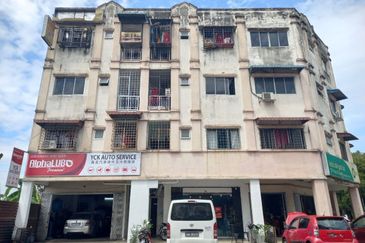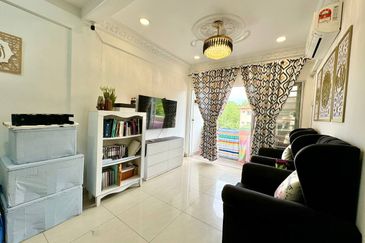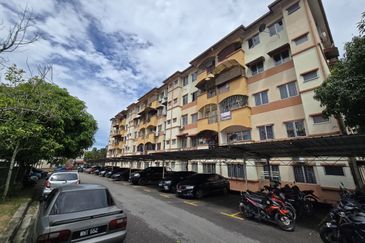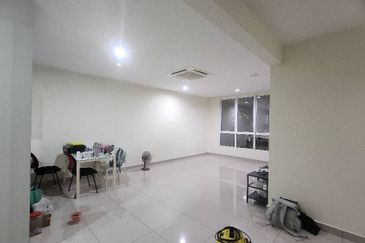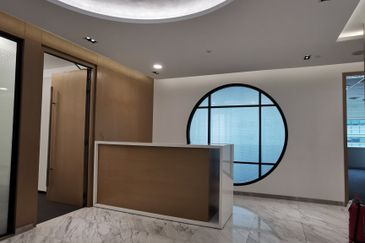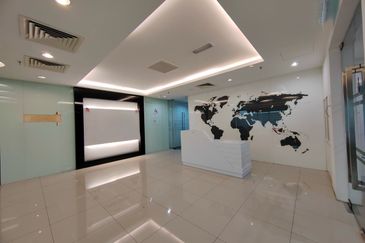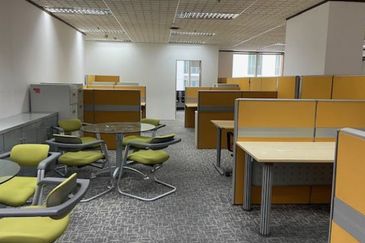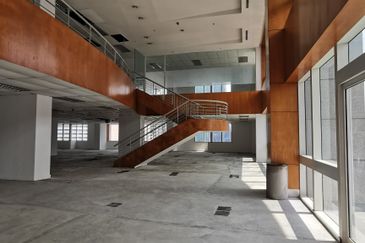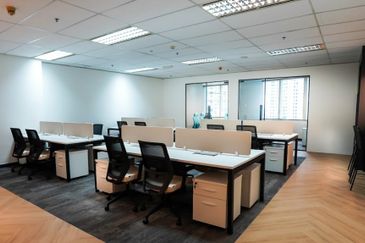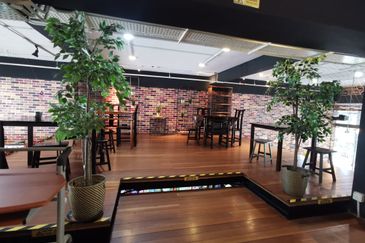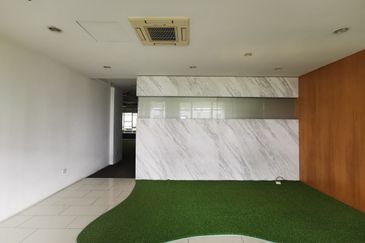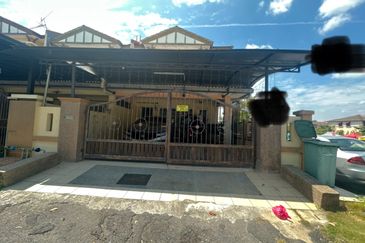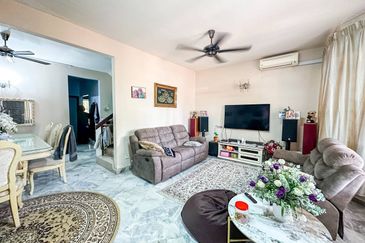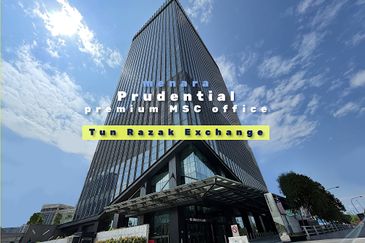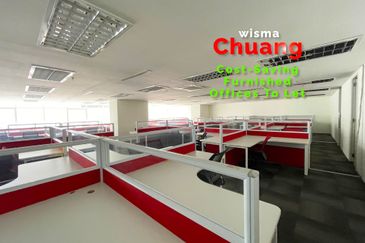
- Minister highlights catalysts to Sabah’s property market, but experts point out issues that need to be noted to align with the progress.
KOTA KINABALU (June 20): Sabah is set to see a spurt in its real estate growth in the next few years, catalysed by some ongoing and future developments in the state and the region.
Sabah’s strategic location in the “heart” of Southeast Asia is highly attractive to international investors and companies looking to shift their manufacturing and supply routes to the region due to the ongoing trade war between China and the USA. Geographically, Sabah provides a shorter distance in terms of shipping routes to East Asia, and planned upgrades to the Sapangar Port serve to bolster the state’s credibility as a vital trade connection, said Sabah Industrial Development and Entrepreneurship Minister Datuk Phoong Jin Zhe during the Property Hunter’s Real Estate Conference 2024 held here last week.
“The state government has committed to upgrading the infrastructure of Sapangar Port. A strategic collaboration with Dubai-based DP World to operate Sapangar Port was entered into in April. With this, we hope to increase Sabah’s shipping connectivity and draw in Middle Eastern investors,” he said during the panel discussion.
The predicted increase in foreign direct investment is also expected to create more opportunities for local entrepreneurs and in Sabah’s housing market.
“The next five to 10 years should see major growth in our manufacturing industries and that economic growth will consequently help the housing and real estate industry thrive. To illustrate this, SK Nexilis [Co Ltd] currently employs 500 workers. SBH Kibing Solar [New Materials (M) Sdn Bhd] has 1,800 employees, and wants to expand to their third production line, which will create another 500 job opportunities. So, KKIB [Kota Kinabalu Industrial Park] will have a 3,000-strong workforce, who all need housing,” added Phoong.
Other geopolitical factors that are forecasted to boost the growth of Sabah’s economy include the inauguration of Indonesia’s new capital city, Nusantara in Kalimantan.
“The presence of two capital cities on Borneo may be useful in driving investors to Sabah. The increased population of Kalimantan will open up a new economic market, with a targeted 1.9 million civil servants and their families to be moved to Nusantara,” said Institute for Development Studies (Sabah) chief research officer, Richard T Koh.
Urban planning should consider TODs and self-contained developments
As Sabah’s urbanisation expands in various epicentres across the state, such as Kota Kinabalu, Penampang, Sandakan, Tawau, and Kinabatangan, the state faces challenges in integrating its existing urban hotspots with its emerging ones.
Deputy Permanent Secretary of the Ministry of Local Government, Tpr Stanley Chong Hon Chung called for a need to bolster intercity connectivity, to inject vibrancy and economic activity into Sabah’s urban centres.

“To have more inclusive urban planning, we should look into mixed-use developments, which include transit-oriented developments (TOD) or self-contained developments. Sabah currently lacks an integrated public transport system, which is an issue that needs to be addressed. Should this infrastructure be implemented, TODs could materialise in 70-80% of Sabah’s urban spaces,” said Chong during another panel discussion that was moderated by EdgeProp editorial and branding Jacqueline Lim.
Leverage heritage buildings to enhance market value
Urbanisation in Sabah also faces another challenge as the state grapples with the intersection of the cultural heritage and real estate development. Malaysian Real Estate Institute (MyREI) head of department Dr Indera Syahrul Mat Radzuan pointed out that the two are inherently linked, as heritage enriches communities, contributes to economic development, and enhances property values.
“When it comes to having heritage zoning, we should look at the increments in property values and market appeal. Heritage buildings are standing out in the real estate market because of their unique features, craftsmanship, and historical significance. We have seen increases in property values in areas with a high concentration of heritage properties. You can see the same trend in Semenanjung’s two main heritage cities, George Town and Melaka,” he said.
Indera also suggested adaptive reuse as a means of urban revitalisation. “Kota Kinabalu has a lot of vacant properties that can potentially be adapted. There must be some measures that property developers can take to revive Sabah’s cities.
Community engagement and social capital is also important for the ‘health’ of our heritage properties.”
Incorporate ESG to improve property development
“ESG (environmental, social, and governance) is an important consideration for property investors and developers because the incorporation of these three factors will improve the value proposition for both these parties. If you want to increase the value proposition of anything and everything in the business world today, you have to incorporate ESG,” said RAM Holdings Bhd group CEO and executive director Chris WK Lee.
“Land development, or any sort of construction, has a very high impact on carbon emissions. Good sustainable practices will help to reduce emissions and the costs of development. By leveraging sustainable building practices like renewable energy sources to power real estate developments, you can save on operating costs and management fees in the long run,” Lee explained.
Good governance, often overlooked, but highly important is another sustainable practice that Lee encourages. “If we have good governance, the cost of business will be much more productive. Good ESG practices are proven to lead to better access to financing.”
Malaysia’s construction greatly impacted by rising material cost
Meanwhile, Sabah Housing and Real Estate Developers Association (Shareda) president Datuk Sr Chua Soon Ping pointed out that the rising cost of building materials and cost of living are negatively impacting the state’s affordable housing market.
“In Malaysian cost planning, a [smaller portion] of the costs is attributable to land, and a [major part] is attributable to construction. In Singapore, the opposite is true, which is why Malaysia is affected the most when there are any fluctuations in the costs of building materials,” he said.
He also called on the government to bear the burden of affordable housing instead of ladening the private sector with it.
“Social housing should be the responsibility of the government. It is a problem that many other countries face too. The state and federal governments should share the responsibility and collaborate with the private sector to take care of the issue of affordability. As Sabah’s cost of living is one of the highest in the country, its affordable housing may not remain accessible to the B40 and M40 groups,” said Chua.
EdgeProp.my was one of the media partners of the conference featuring a series of keynote addresses, forum sessions and presentations focusing on Sabah this year.
Looking to buy a home? Sign up for EdgeProp START and get exclusive rewards and vouchers for ANY home purchase in Malaysia (primary or subsale)!
TOP PICKS BY EDGEPROP
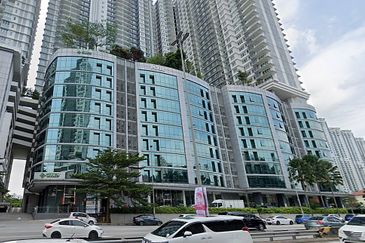
Southbank Residence
Jalan Klang Lama (Old Klang Road), Kuala Lumpur
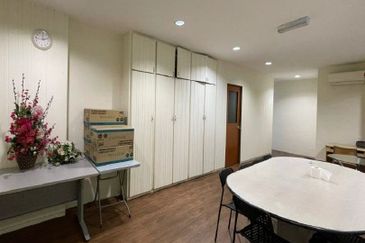
Jalan Klang Lama
Jalan Klang Lama (Old Klang Road), Kuala Lumpur

DC Residensi (Damansara City)
Damansara Heights, Kuala Lumpur


